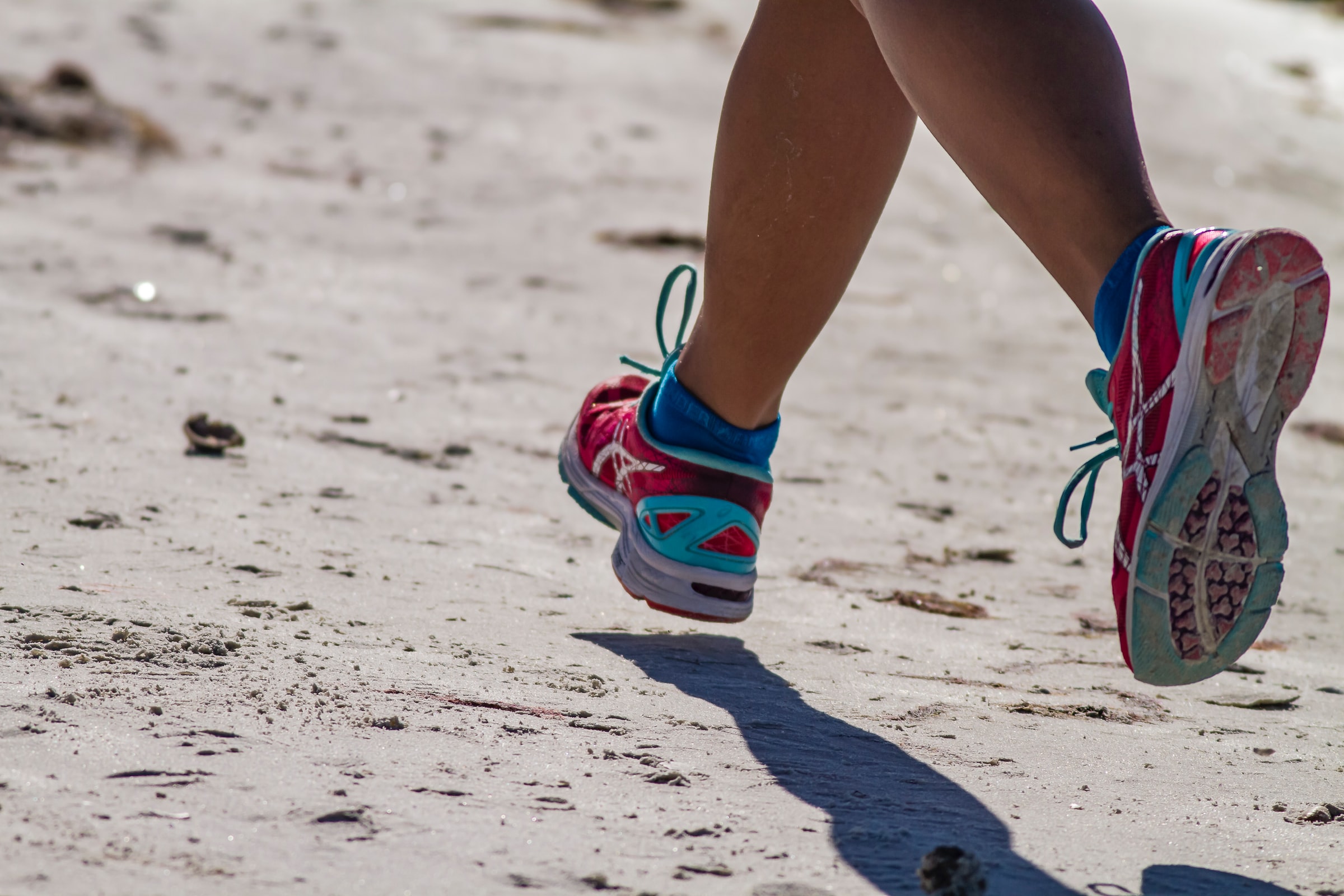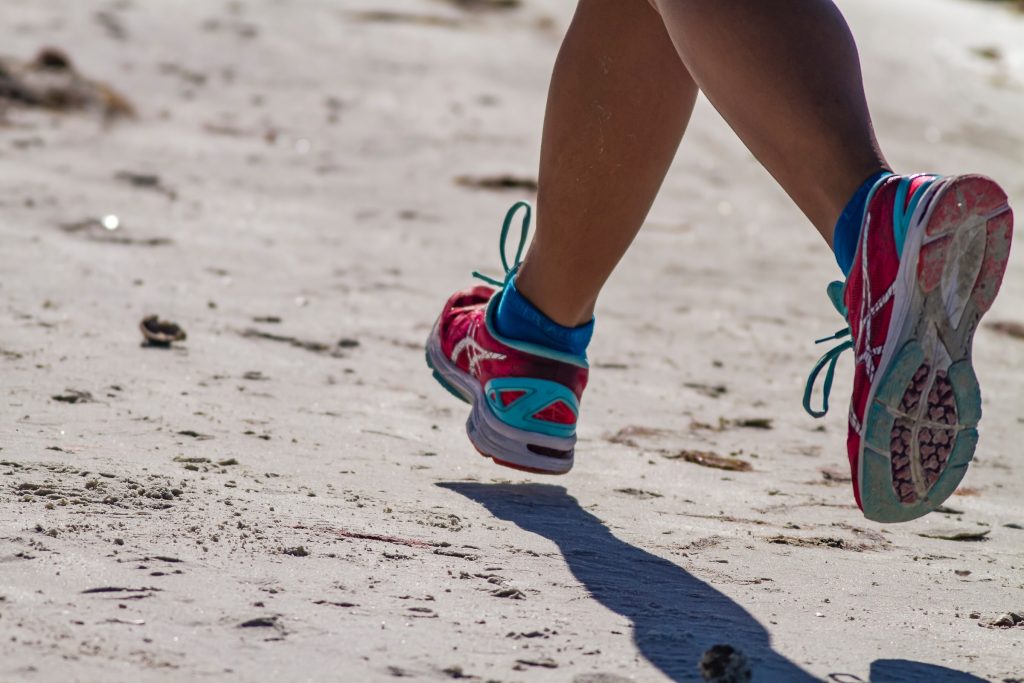Your cart is currently empty!

Experts Answer The UK’s Most-Searched Running Injuries
2020 (and a large portion of 2021) became the year of hobbies. From cross-stitching to banana bread baking, every member of the nation and beyond did what they needed to keep busy during lockdown.
With gyms closed countrywide, one of the most popular hobbies became running. People took to the streets for their allocated daily outdoor exercise to tone up their calves, take in the fresh air, and see another human face.
However, with this surge in jogging during lockdown came a soar in online searches for an array of injuries over the last 12 months. Queries including ‘sore knee from running’, up 400%, ‘how to help shin splints’, up 600% and ‘sore Achilles after running’, up 250% were just some of the most popular. So we thought we’d turn to some of our expert ambassadors, physiotherapist Richmond Stace and Olympic athlete Ross Murray, for the answers to some of the UK’s most-searched running injuries.
Ankle support for running – up 250%
For those wanting to know how you can support weak ankles when running, Ross’ advice is to strengthen them: “Using ankle supports only masks the issue. Completing 10 to 15 minute foot and ankle circuits three to four times a week is a great way to build strength, improve performance and prevent injuries.”
Richmond agrees, and advises to get to the root of the issue: “If you have weak ankles, you must find out why and address the reason. Typically, this includes training such as balance exercises, calf raises and static/dynamic postures.
In addition to strengthening the muscles, balance work is essential, especially if you are a trail runner”
Sore Achilles after running – up 250%
If you’re one of the many people Googling why your Achilles is sore after a run, physiotherapist Richmond advises you ask yourself the following to get to the root of the cause:
- How many miles have I done in my shoes?
- How sedentary am I before running?
- Do I have a daily movement and stretching routine?
- Have I just started running?
- Have I increased my miles? Or changed terrain?
- Am I unwell?
“If you have soreness, your body is telling you to take care – balance activity with rest.” Richmond continues.
While there are likely to be specific practices and exercises to help, such as self-massage, regular movement and rest are all useful.
Pain is part of the way we protect ourselves. If we have an injury, there will be an inflammatory response. This is normal! Let this process proceed naturally to allow for healing. If the pain does persist, seek professional advice from a therapist.”
Ross agrees, adding: “[A sore Achilles] usually means you’re overloading the area; this is done by running too much or too hard. Consider cutting back the intensity of your training by 15% until your Achilles doesn’t hurt. Then you can look to increase the intensity on a bi-weekly basis by 5-10%.”
As well as recommending the WholyMe relief balm to ease inflammation, Ross suggests “icing… what you need is a bucket that you can fit your foot in… I’d recommend keeping it in there for around 12 minutes”.
How to help shin splints – up 600%
“There are many reasons why shin splints occur,” Richmond explains.
“Much emphasis is put on biomechanics but this is just one of many potential factors. Only addressing footwear and foot position is like trying to make a cake with just an egg and a bowl.
Take a look at your training routine – is it too intense? Or is there a lack of recovery time? Shin splints can also be caused by the wrong running shoes, a sedentary work life, stress, ill health or even poor sleep.
The best place to start is with – you guessed it – rest! Consider seeking professional advice to discuss your training, health, lifestyle and other relevant factors. Then the best course of action can be determined as a route back to sustained running and performance.”
Lower back pain after running – up 200%
For physiotherapist Richmond, there are “two common reasons for back pain after running: the way you run as a result of how your body moves and having a pre-existing back problem.
The way your body moves is mainly impacted by lifestyle. If you spend time sitting for work, tightening up from stress, and then take that body into running, there is a greater chance of pain or injury. The question to ask yourself is: what body am I taking on this run?
Our bodies need regular, daily movement routines that bridge between the sitting time and the running time. As we age, the need becomes greater.
We also need to pay attention to recovery, including cool downs, stretching and rest time.”
“There are many ways to move your back to aid recovery and reduce pain, such as yoga and pilates. The key is consistency,” Richmond explains.
Immediately after running, a handful of simple movements such as lumbar rolls, knees to chest and roll downs can be helpful. Breathing practices also help the recovery process by activating your parasympathetic nervous system – your body’s recovery state. Then you may like to lie in the bath, soaking in WholyMe relief salts.”
Sore knee from running – up 400%
Richmond describes runner’s knee as “the pain in the knee associated with running. This can be during or after exercise. If the sensitivity builds, you can find the pain is increasingly noticeable during other activities such as walking, going up to down stairs and sitting.
If you’re suffering from a sore knee after running, a good recovery programme should include stretching, range-of-movement exercises such as knee circles, and strength training to build up the muscles that support the knee joint.
Once your knee has started feeling better, you can look at a graded return to running. Again, consistency is vital here, as well as reviewing other lifestyle factors including sleep and stress.”
Pain from running shouldn’t put you off a hobby that you’re enjoying. The main takeaway for any running injury is to focus on recovery, stretching and a training intensity that suits your body. Make sure too that you’re taking adequate time to relax, unwind and get the right amount of sleep and nutrition. If the pain persists, always seek out professional, personalised advice.
